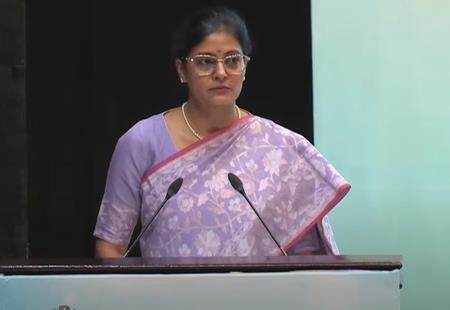National Viral Research And Diagnostic Laboratories Protecting India From Viruses, Pathogens: Minister
Speaking at the National VRDL Conclave 2025 in New Delhi, Patel highlighted that pandemic preparedness and VRDLs are part of a larger nationwide ecosystem of health research and innovation.
“Our VRDLs have stood as sentinels in protecting the country during the Covid-19 pandemic and beyond. The focus is on detecting new bacteria, viruses, and pathogens, and on India's progress in diagnostics," Patel said.
The MoS acknowledged the key role played by these laboratories in sequencing the virus and validating nearly 1,700 diagnostic commodities.
“VRDLs have been central to early detection of outbreaks of Nipah, Zika, and Kyasanur Forest Disease,” Patel said, while noting that 16 of these VRDLs are now equipped with Bio-Safety Level 3 facilities to study high-risk pathogens.
The Union Minister also released the In-Vitro Diagnostics (IVD) validation portal and protocols and exuded confidence that“the new IVD validation portal launched today will facilitate faster, more transparent, and industry-friendly validation processes.”
As part of strengthening evidence-based policymaking, Patel released the first VRDL Bulletin. She stated that“this will enable real-time tracking of viral infections to improve resource allocation by both state and central governments”.
Further, Dr Rajiv Bahl, Director General, ICMR stated that the two-day conclave will unveil transformative initiatives aimed at strengthening the nation's ability to respond effectively to viral outbreaks, emerging infections, and other health emergencies, while reinforcing the vision of Atmanirbhar Bharat.
“Just like India's air defence was impenetrable during the recent Operation Sindoor, the VRDL network will also act as an impenetrable biodefence of India,” he said.
“With 164 laboratories across 26 states and 5 Union Territories, the VRDL network acts as a vital safeguard, enabling early detection, swift diagnosis, and prompt response to infectious diseases. Its exemplary contributions during crises such as the COVID-19 pandemic, as well as outbreaks like Nipah, Kyasanur Forest Disease, Zika, and Crimean-Congo Hemorrhagic Fever, have significantly strengthened India's disease surveillance and emergency response mechanisms,” he further stated.

Legal Disclaimer:
MENAFN provides the
information “as is” without warranty of any kind. We do not accept
any responsibility or liability for the accuracy, content, images,
videos, licenses, completeness, legality, or reliability of the information
contained in this article. If you have any complaints or copyright
issues related to this article, kindly contact the provider above.
Most popular stories
Market Research

- NOVA Collective Invest Showcases Intelligent Trading System7.0 Iterations Led By Brady Rodriguez
- 1Inch Unlocks Access To Tokenized Rwas Via Swap API
- Ethereum-Based Meme Project Pepeto ($PEPETO) Surges Past $6.5M In Presale
- USDT0 And Xaut0 Are Now Live On Polygon
- Falcon Finance Announced $FF And Community Sale On Buidlpad
- Japan Halal Food Market Size To Surpass USD 323.6 Billion By 2033 With A CAGR Of 8.1%






















Comments
No comment